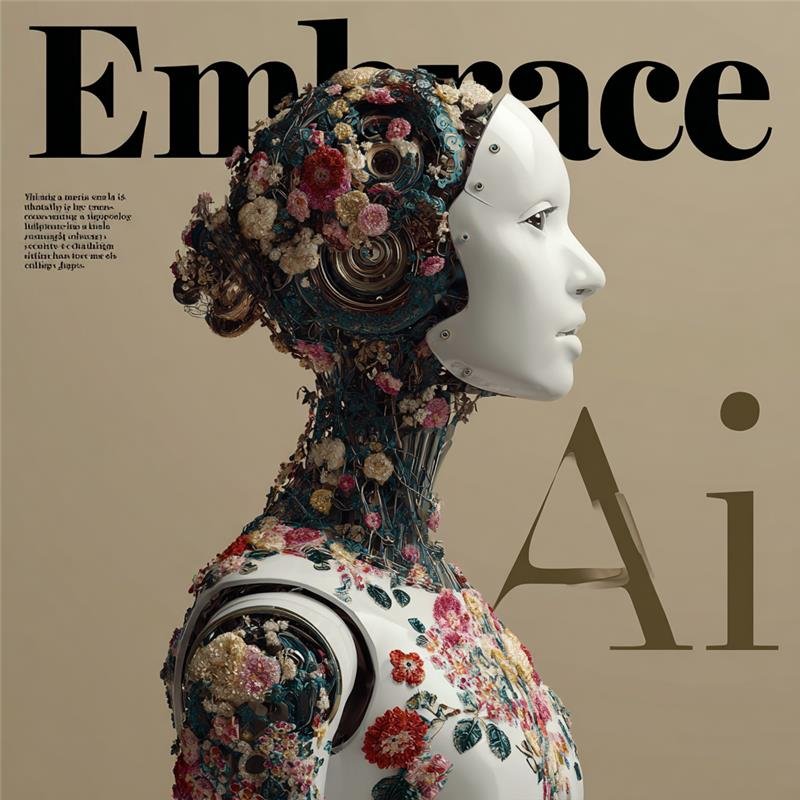Artificial intelligence is often talked about as if it belongs to some distant future, a world of humanoid robots and sentient machines. In reality, AI is already here, quietly embedded in the everyday tools and services we rely on. The future did not knock politely and wait to be invited in. It slipped through the cracks of our phones, our workplaces, our homes, and our habits.
The question is no longer if AI will shape our lives. It already has. The real question is whether we choose to embrace it thoughtfully or be dragged along by it unprepared.
AI is already part of your daily routine
Most people interact with AI multiple times a day without realizing it.
- Your phone’s autocorrect and predictive text are simple forms of AI.
- Recommendation engines suggest what to watch, read, or buy next.
- Email filters use machine learning to distinguish spam from legitimate messages.
- Navigation apps predict traffic and optimize your route.
None of this feels like science fiction anymore. It feels normal. That is the point. Once technology becomes useful and reliable, it fades into the background and becomes infrastructure. AI is rapidly becoming exactly that: invisible infrastructure for decision making, prediction, and personalization.
The shift from tools to teammates
Earlier generations of technology were static tools. You pressed a button, they did something, and that was the end of it. AI systems are different. They learn, adapt, and improve based on data and feedback.
In the workplace, AI is evolving from a passive tool into a kind of digital teammate.
- Content creators use AI to brainstorm ideas, outline drafts, and refine language.
- Developers use AI coding assistants to spot bugs, generate boilerplate, and explain unfamiliar code.
- Analysts use AI to surface patterns in data that would be almost impossible to see manually.
The goal is not to replace people. The goal is to move humans up the value chain: away from repetitive tasks and closer to judgment, creativity, relationship-building, and strategy. Those who learn to “manage” their AI teammates will outpace those who insist on doing everything the old way.
Why resistance is risky
Skepticism about AI is healthy. Blind adoption is dangerous, but so is blanket resistance.
AI will not wait for every individual, organization, or industry to feel ready. Markets, competitors, and consumers will move toward more efficient, more personalized, and more intelligent solutions with or without you.
Refusing to engage with AI brings three risks.
- Skill risk
The longer you delay learning to use AI, the steeper the learning curve becomes. What is a moderate adjustment today could become a painful overhaul tomorrow. - Competitiveness risk
Teams that integrate AI thoughtfully will deliver faster, better results. They will set new expectations for speed, quality, and customization. Standing still in that environment is effectively moving backward. - Policy and ethics risk
People who refuse to touch AI have no influence over how it is deployed. Ethical and responsible AI development depends on informed participation, not disengagement.
How to embrace AI without losing your humanity
Embracing AI does not mean worshiping it or outsourcing your thinking. It means treating it as an amplifier for human capability.
Here are practical ways to do that.
- Start with augmentation, not automation
Use AI to help you do your existing work better. Ask it to summarize, translate, explain, draft, or brainstorm. Keep the final decision and quality control in your hands. - Learn to ask good questions
AI systems are extremely sensitive to inputs. The quality of your prompts largely determines the quality of the output. Clear, specific, and contextual instructions tend to produce the best results. “Prompting” is quickly becoming a core literacy, much like searching the web once was. - Always verify and refine
Treat AI’s answers as a first draft, not ground truth. Check facts. Adjust tone. Correct errors. Add nuance. The human role shifts from doing all the work to curating and improving what the system produces. - Keep ethics in the loop
Pay attention to privacy, bias, transparency, and consent. Ask where the data comes from. Ask how the model might fail. Responsible use of AI is not a separate task. It is part of competent use.
The new baseline of competence
There was a time when using email or the internet at work was considered optional or “for the tech folks.” Today, those skills are basic. AI is on the same trajectory, only faster.
In many fields, the baseline expectation will be:
- You know how to use AI tools relevant to your role.
- You understand their strengths and limitations.
- You can explain how you arrived at an outcome when AI was involved.
People who combine domain expertise with AI literacy will define the new standard of excellence.
Building an AI mindset
Embracing AI is not only about learning specific tools. Tools change. Mindsets last.
An effective AI mindset includes:
- Curiosity – Instead of assuming “this won’t work for my job,” you experiment and see where it fits.
- Adaptability – You are willing to update workflows as better tools emerge.
- Critical thinking – You can spot when AI is hallucinating, oversimplifying, or missing context.
- Ownership – You stay responsible for your decisions, even when AI made the suggestion.
The people who thrive will be those who can integrate new capabilities without outsourcing their judgment.
The future is unevenly distributed
AI adoption is not uniform. Some teams and industries are aggressively experimenting. Others are barely paying attention. This uneven adoption creates an opportunity.
If you embrace AI early and thoughtfully, you get an asymmetry in your favor. You gain:
- Time, because routine tasks run faster.
- Insight, because patterns surface more clearly.
- Leverage, because your ideas are turned into output more quickly.
In a world where time, insight, and leverage are scarce, that advantage compounds.
Conclusion: Meet the future halfway
AI is not a distant storm on the horizon. It is the weather we already live in. You can ignore it, but you cannot escape it.
To “embrace AI” is not to accept inevitability passively. It is to meet the future halfway: to learn, to experiment, to question, and to shape how this technology is used in your life and work.
The future has already arrived. The choice now is whether to participate in building it or let it be built entirely around you.




